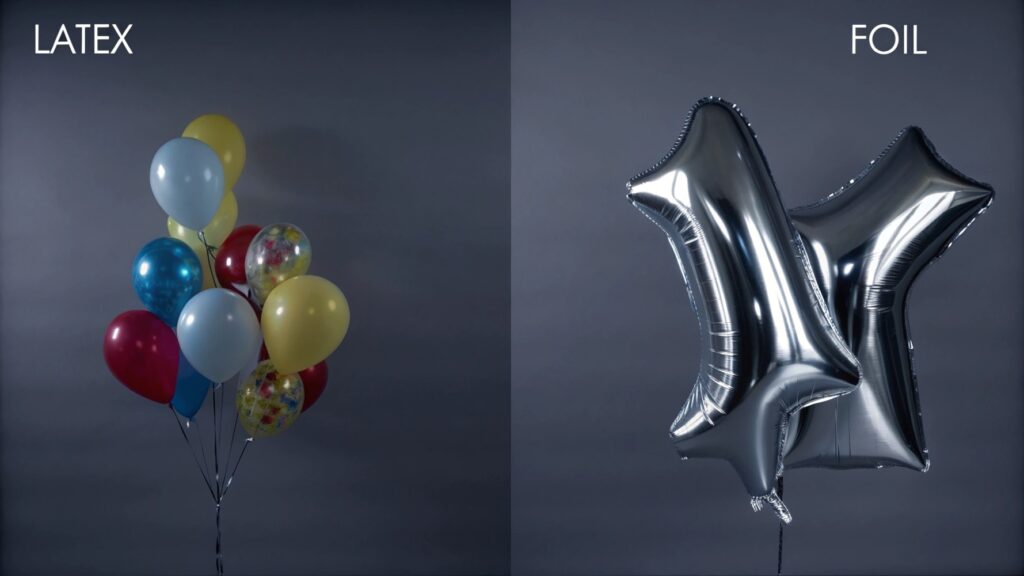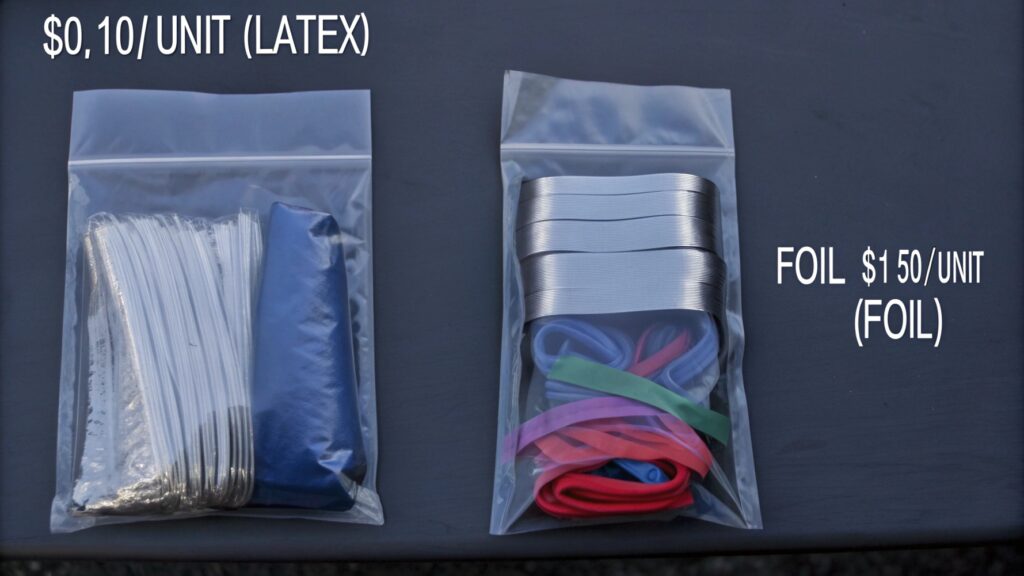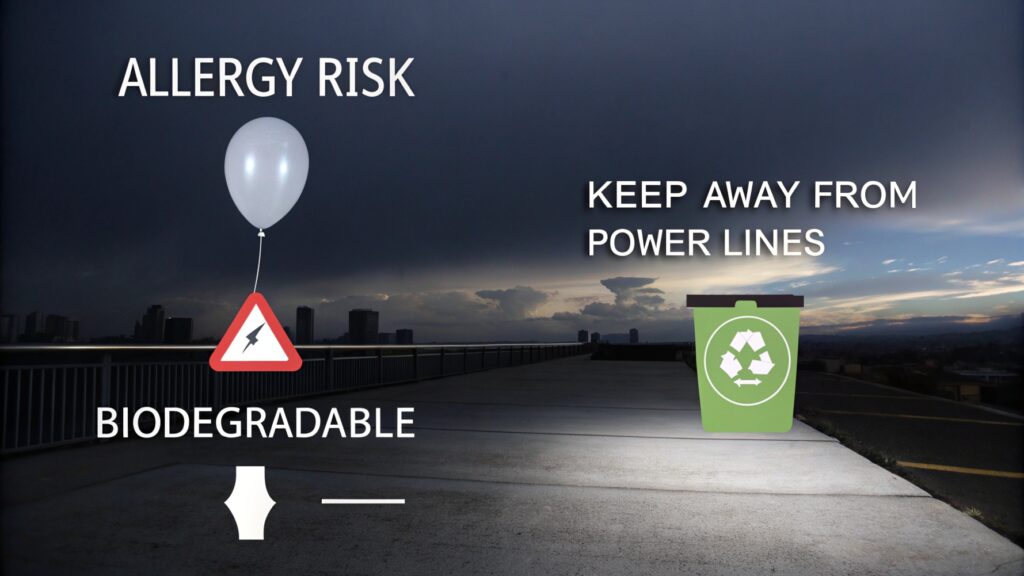What's the difference between latex and foil balloons?
Are you curious about the differences between latex and foil balloons for your next big event or retail offering? Choosing the right type can be a challenge.
Latex balloons1 are elastic and biodegradable2, making them a common choice for many events, especially where environmental impact3 is a concern. Foil balloons4, on the other hand, are non-porous and offer longer float time5s with a wider variety of shapes and intricate designs.

As a manufacturer, I understand the importance of making informed decisions when sourcing balloon products. Let's look closer at how these two popular options compare to help you decide.
Are latex balloons biodegradable2 compared to foil balloons?
Do you ever wonder which type of balloon is better for the environment? The environmental impact3 of balloons is a growing concern for many businesses.
Latex balloons1 are generally biodegradable2 because they are made from natural rubber6, which breaks down over time. Foil balloons4, made from a plastic and aluminum composite, are not biodegradable2 and pose a greater long-term environmental challenge.

I have seen the market shift towards more sustainable choices, and understanding the environmental profiles of these products is important. This helps us serve our customers better and meet global demands for greener products. We constantly look for ways to improve our own manufacturing process7es to align with these natural material benefits.
| Feature | Latex Balloons | Foil Balloons |
|---|---|---|
| Material | Natural rubber latex | Mylar8 (plastic with metallic coating) |
| Biodegradability | Biodegradable; degrades over time | Not biodegradable2; remains in environment |
| Decomposition | Breaks down relatively quickly when exposed | Does not break down naturally |
| Environmental Impact | Lower; natural product | Higher; synthetic materials |
| Usage Context | Often preferred for eco-friendly9 events | Used when long-term display or unique shapes are needed |
Latex balloons1 come from rubber trees, a renewable resource. This makes them a more environmentally friendly choice. They break down in sunlight and water, similar to an oak leaf. Foil balloons4, however, are made from synthetic materials that do not decompose. They stay in the environment for a very long time. This difference is important for consumers who prioritize sustainability. Many of our clients ask about this, and it is something we consider in our product development.
What are the cost differences between latex and foil balloons for bulk orders10?
Are you trying to manage your budget for a large order? The cost difference between latex and foil balloons for bulk purchases can significantly impact your bottom line.
For bulk orders10, latex balloons are typically much more cost-effective11 per unit than foil balloons due to their simpler manufacturing process7 and natural raw materials. Foil balloons4 require more complex production and materials, leading to higher individual unit costs.

When I discuss large orders with clients, cost is always a key factor. We work hard to optimize our production to offer competitive prices, especially for bulk quantities. Understanding the cost structures of both types helps us give accurate quotes that meet customer needs.
| Cost Factor | Latex Balloons (Bulk) | Foil Balloons (Bulk) |
|---|---|---|
| Raw Material | Natural rubber; generally cheaper | Mylar8 (plastic film + aluminum coating); more expensive |
| Manufacturing | Simpler molding and coloring process; fast | Complex lamination, printing, and sealing; slower |
| Unit Cost | Significantly lower per unit | Higher per unit due to specialized production |
| Design Variety | Limited by shape (round, heart) | Allows for intricate shapes and custom designs |
| Printability | Good for basic logos/messages | Excellent for detailed graphics and vibrant colors |
The production of latex balloons is very efficient. We can produce large quantities quickly, keeping costs down. Foil balloons4 involve several more steps, like laminating layers and precise heat sealing for complex shapes. These extra steps mean higher labor and material costs. For a large event or retail stock, latex balloons offer better value if the design is simple. Many of our customers combine both types to balance cost and visual appeal12 in their displays.
Which type of balloon, latex or foil, offers better helium retention13?
Are you worried about your balloons deflating too soon? Helium retention is a critical factor when choosing between latex and foil balloons, especially for long-lasting displays.
Foil balloons4 offer significantly better helium retention13 than latex balloons because their non-porous metallic surface prevents gas from escaping. Latex balloons1, made from porous natural rubber6, allow helium to diffuse through their surface more quickly.

I have seen many events where balloons start to droop earlier than expected, and this usually comes down to the choice between these two types. We often advise our clients on how to get the most out of their balloon displays, and helium retention13 is a big part of that.
| Feature | Latex Balloons | Foil Balloons |
|---|---|---|
| Material Permeability | Porous natural rubber6 allows slow helium escape | Non-porous Mylar8 prevents helium escape |
| Float Time | Typically 6-12 hours for 11-inch balloons | Days to weeks, depending on size and conditions |
| Sensitivity to Temp. | More sensitive; expand/contract more | Less sensitive; more stable in temperature changes |
| Best Use | Short-term events, quick celebrations | Long-term displays, retail promotions14, large parties |
| Seal Integrity | Knot seal; can sometimes leak slowly | Heat-sealed seams; very secure |
Helium atoms are very small. They can pass through the microscopic pores in natural rubber6. This means latex balloons will deflate faster. Foil balloons4 have a metalized layer that acts as a barrier, trapping the helium inside. This allows them to stay inflated for much longer periods. For example, a standard 18-inch foil balloon can float for several days or even weeks, while a typical 11-inch latex balloon might only float for 12-24 hours. We test our balloons to ensure consistent helium retention13, helping our customers avoid disappointment in their displays.
What are the safety considerations15 for using latex versus foil balloons at events?
Are you concerned about safety when using balloons at public gatherings? Safety is paramount, and there are key differences in considerations for latex and foil balloons.
Latex balloons1 pose a choking hazard for young children when uninflated or broken. They can also cause allergic reactions16 in individuals sensitive to latex. Foil balloons4, while generally safer regarding allergies and choking for larger sizes, can conduct electricity and should not be released near power lines17.

As a manufacturer, safety is always our top priority. We follow strict safety standards in production. Understanding the risks helps our customers use our products responsibly. This is crucial for events of all sizes.
| Safety Aspect | Latex Balloons | Foil Balloons |
|---|---|---|
| Allergy Risk | High (natural rubber6 latex allergy) | Low (no latex components) |
| Choking Hazard (uninflated/broken) | High (especially for small children, balloons can conform to airway) | Low (larger sizes, less conformable, but small pieces can still be a hazard) |
| Electrical Conductivity | None | High (metallic coating, avoid power lines17) |
| Environmental | Biodegradable, but still recommend proper disposal | Non-biodegradable2; proper disposal is critical |
| Disposal Issues | Can be ingested by animals if improperly discarded | Can entangle nature, cause power outages if released |
The most significant safety concern with latex balloons is the risk of latex allergies and choking. Many schools and hospitals have "latex-free" policies because of severe allergic reactions16. Uninflated or broken latex balloons can easily block a child's airway. Foil balloons4 do not carry this allergy risk. However, their metallic coating means they can conduct electricity. Releasing them outdoors, especially near power lines17, can cause power outages or even fires. We always advise our customers to use both types responsibly and dispose of them properly. My company emphasizes product safety through testing and clear warning labels to protect end-users.
Conclusion
Latex and foil balloons both offer unique benefits. Latex balloons1 are more eco-friendly9 and cost-effective11 for bulk, while foil balloons offer longer float time5s and diverse designs. Many customers choose to integrate both products for different effects.
-
Explore the advantages of latex balloons, including their eco-friendliness and cost-effectiveness for various events. ↩ ↩ ↩ ↩ ↩ ↩
-
Learn about the biodegradability of latex balloons and their environmental impact compared to foil balloons. ↩ ↩ ↩ ↩ ↩ ↩
-
Understand the environmental implications of using latex and foil balloons for your events. ↩ ↩
-
Discover the distinct characteristics of foil balloons, such as their intricate designs and longer float times. ↩ ↩ ↩ ↩ ↩ ↩ ↩ ↩ ↩
-
Get insights into the float times of latex and foil balloons to plan your event decorations. ↩ ↩
-
Discover the properties of natural rubber and its role in making latex balloons eco-friendly. ↩ ↩ ↩ ↩ ↩
-
Explore the differences in the manufacturing processes of latex and foil balloons. ↩ ↩
-
Understand the composition of Mylar and its benefits in creating durable foil balloons. ↩ ↩ ↩
-
Discover why latex balloons are a more sustainable choice for environmentally conscious consumers. ↩ ↩
-
Learn about the benefits of bulk balloon orders, including cost savings and convenience. ↩ ↩
-
Find out why latex balloons are a budget-friendly option for bulk orders and events. ↩ ↩
-
Understand how combining latex and foil balloons can create stunning displays for any event. ↩
-
Explore the differences in helium retention between latex and foil balloons for long-lasting displays. ↩ ↩ ↩ ↩
-
Learn how foil balloons can attract customers and enhance the visual appeal of retail promotions. ↩
-
Learn about the safety aspects of using latex and foil balloons, especially for events with children. ↩
-
Understand the potential allergy risks associated with latex balloons and how to mitigate them. ↩ ↩
-
Learn about the safety risks of releasing foil balloons near power lines and how to prevent accidents. ↩ ↩ ↩
